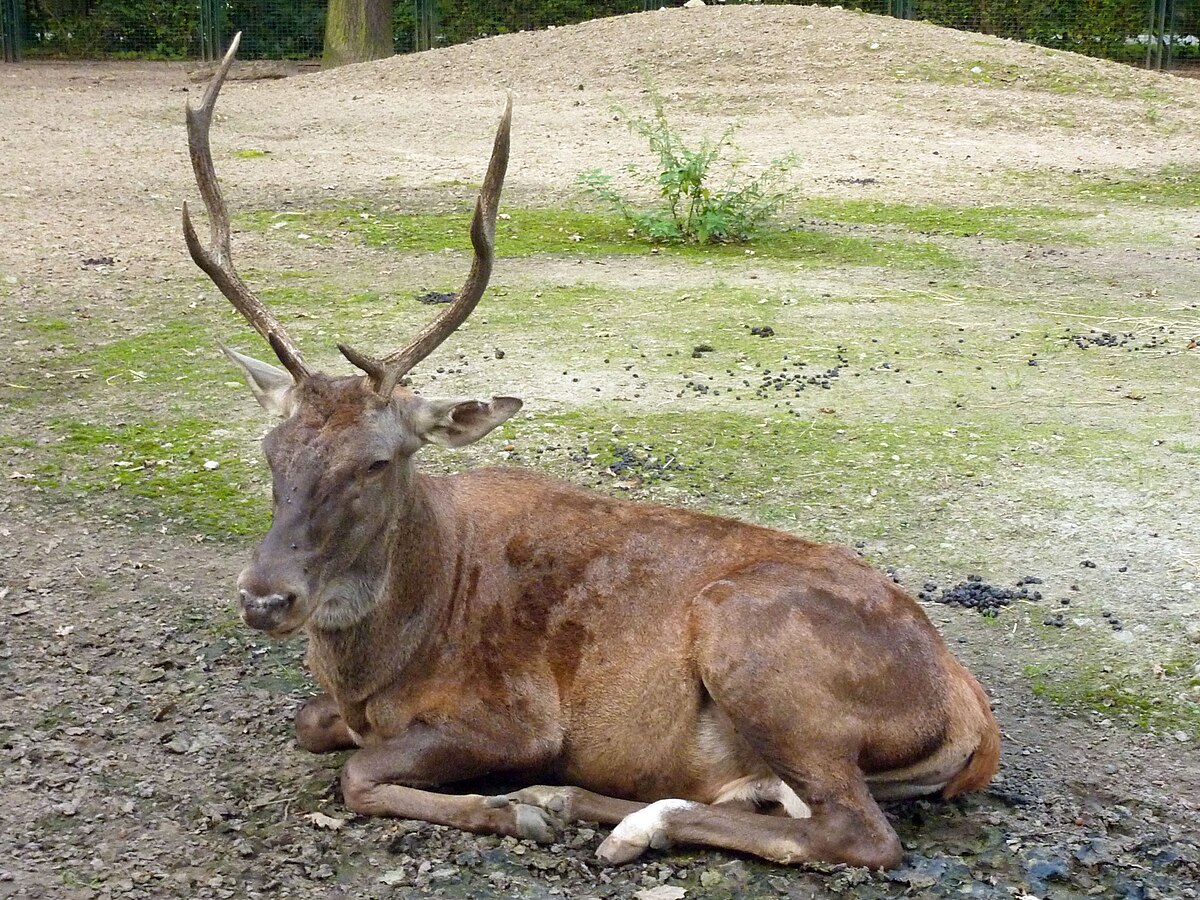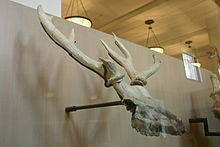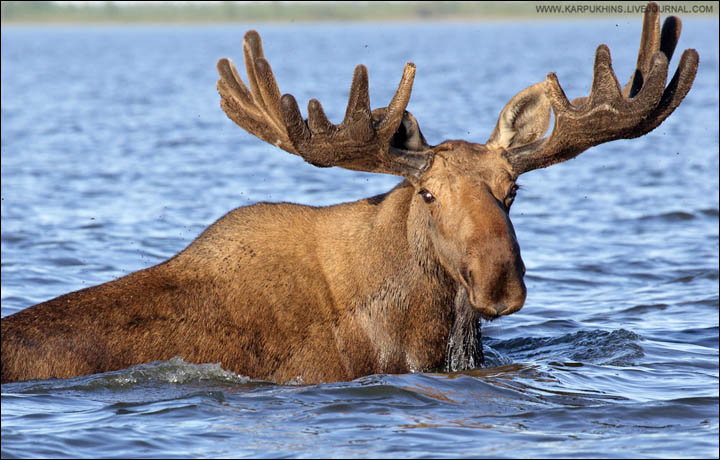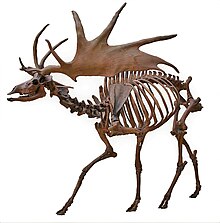Rewilding is an exciting, new narrative of recovery and hope
by
Prerna Singh Bindra on 8 February 2019
![]()
*This image is copyright of its original author
- Rewilding is the reintroduction of missing, locally extinct plants and animals to a landscape, which has the potential to restore ecosystems.
- A recent conference in the U.K. discussed the various aspects of rewilding with an aim to set a visionary roadmap inspired by stories and messages of hope from diverse geographies and a spectrum of projects.
- For rewilding to be successful on a large scale, there has to be consensus in its favour, and the process needs to be consultative, inclusive and transparent with government and policy support.
- In her commentary on rewilding, Prerna Singh Bindra compares stories from different regions and India and opines that India must continue its protection of wildlife and indeed take the lead in conservation.
“But without bringing in predators how do you control the deer population – which at over 1.5 million is believed to the
highest since the Ice Age in the United Kingdom?” The question was posed at the recent
Rewilding Conference held in Cambridge, England in a talk by author
Isabella Tree on the successful rewilding of the 3,500-acre family estate
Knepp in West Sussex.
Paradoxically, in a conference to bring back nature, the answers to contain the deer, which is degrading landscapes by overgrazing meadows and consuming young trees, were anthropogenic — culling, hunting and consumption of venison.
Not predation by the carnivorous cat, lynx, that once lived wild in the U.K. about 1,300 years ago, or wolves, that were hunted out by around the 17th century. But without introducing predators, who naturally check overpopulation of herbivores and shape the landscape, is it
rewilding in the truest sense of the term?
At the conference, author and environmentalist, George Monbiot addressed, literally, the elephant in the room, by announcing, “We, in Britain, live in an elephant adapted ecosystem,” and that “I want them back, even if the response (to this) is shall we say, muted.”
Astounding as it may seem, 40,000 years ago, not very long in geological terms, straight-tusked elephants — closely related to the Asian elephants in India — were part of the European ecosystem. In fact, if your London itinerary included the popular Trafalgar Square, it might interest you to know that you likely walked over the bones of now-extinct elephants, lions and hippos (the kind that still live in Africa), which were unearthed when Trafalgar Square was excavated in the 19th century.
Elephants need vast landscapes and as forests shrink, they increasingly cross paths with humans, which sometimes results in conflict. For instance, in India some
400 people are killed annually by elephants, which, in turn, are routinely chased, harried, injured and killed in retaliation for loss of crops, life – or for their presence in human habitation.
Elephants are not really part of the vibrant rewilding debate in Europe. On a viability scale of 10, Monbiot rates it a low ‘2’ for reintroduction in the U.K., but they raise vital questions: What are the animals we seek to rewild, and further, is our vision limited to only rewilding animals we want to? How far back in time do we go when we are considering rewilding locally extinct animals? Is rewilding feasible in degraded, destroyed ecosystems, and in a crowded, hungry planet? Does it conflict with interests of local communities and the current paradigm of development and growth? Indeed, what is rewilding?
![]()
*This image is copyright of its original author
A 2006 image of deer on the Knepp Estate in Sussex.
Photo by Shazz/Wikimedia Commons.
Rewilding has been described as reintroducing the missing, locally extinct plants and animals to a landscape, restoring ecosystems. It is also about “abandoning the ethos of human dominion over nature,” as feminist icon, author and conservationist Germaine Greer noted in her keynote address at the conference.
It is about reversing damage to ecosystems, restoring nature. It is certainly not merely planting trees, or the futile notion of “compensating” the loss of old growth forests by planting new trees, which seems to be the way of the world, including in India where destroying forests for infrastructure and industry
is legally permissible when ‘compensated’ with planting a new forest.
Rewilding is setting aside the clock and abiding by nature’s time. It demands patience. The Knepp farm in Sussex took seed 17 years ago, while on the other side of the world, at the edge of the Thar desert in Jodhpur, India, the ecological restoration of the
Rao Jodha Desert Rock Park was initiated in 2006. Both projects are ongoing. Rewilding cannot heed government deadlines. The stupendous effort to restore the ecology of the denuded Aravalis, one of the world’s most ancient mountain ranges, in the Aravali Biodiversity Park in urban Gurgaon in northern India has had to battle with impatient bureaucrats who prefer “fast growing trees”— even if exotic — which would yield rapid results, in time to meet annual targets, and the next budget.
Rewilding projects may take decades, or even have a 250-year vision, like the
project to restore keystone species in the Scottish Caledonian forest, that transcends generations. The seeds, though, must be sown now, to breathe life into damaged, dying ecosystems. In the era of the
Sixth Extinction and the bleak landscape of conservation, rewilding is an exciting, new narrative of recovery and hope.
The two-day conference organised by
Cambridge Conservation Forum discussed many such issues, sparked contentious debates, set a visionary roadmap and offered an interesting mix of remarkable stories and messages of hope from diverse geographies and a spectrum of projects. The pioneering Knepp project transformed an intensively aggressively farmed land to a hotspot for nightingales and rare turtle doves, nesting peregrine falcons, wild boar, deer; and has the U.K.’s biggest breeding population of purple emperor butterflies and all of its owl species.
The reintroduction of one of the largest birds of prey—the
Golden Eagle in southern Scotland, where populations are precariously low at two to four breeding pairs. Founder of ‘Trees for Life’, Alan Watson told his inspiring story of rewilding 10,000 acres of Dundreggan in Scotland, part of a landscape scale project to restore the beleaguered Caledonian Forest to its former glory. This is part of an ambitious network
Rewilding Europe, which has projects across eight landscapes and 10 countries including those that transcend borders such as the effort to rewild the
Oder Delta across Poland and Germany.
Not all projects need to be on a grand scale. Germaine Greer’s U.K. project—she has also restored
70 acres of Gondwana Rainforest in Australia—The Mills, is a small, a three-acre site in Great Chesterford, Essex. In India, conservationists Poonam and Harsh Dhanwatey invested in a degraded seven-acres land in the village Ghosri, that formed a vulnerable stretch connecting two parts of the Tadoba Tiger reserve, Maharashtra, and dedicatedly restored it, working with the locals to secure the area. That was in 2000, and today, it is a lush forest that provides
safe passage to tigers, bears, leopards, sambar deer, wild dogs and other wild animals.
Not all projects were lavishly funded either. Projects like the one in Ghosri, or a restoration programme in the 100-acre Jabarkhet Nature Reserve, in the lower Himalayas, close to Mussoorie, where the hills have been ravaged by real estate and other development, are driven by the urge to conserve and heal the land. They were initially self-funded before business models like low-impact tourism were developed to sustain it. Many individual efforts are done without expectations, motivated, as Greer says, “to give what wildlife needs most — space.”
Therein lies the crux of the rewilding debate: Is there room to rewild? Does it have wide support? In the case of predators the answer, most times, is “
no”, more so in the U.K., which Monbiot points out has been “particularly anomalous, even as we have lost more of our large mammals than most countries.” In fact, the U.K.
ranks an abysmal 189th out of 218 countries assessed for “biodiversity intactness.”
In Ireland, rewilding backfired badly. Tragically. The first
white-tailed eagle fledgling to be released – as part of a reintroduction effort – was shot dead. A survey, explained David Bavin of
the Vincent Wildlife Trust, to asses people’s attitudes to the introduction of pine martens, who may predate on poultry and game birds, revealed a clear, univocal voice of opposition. The good news is such attitudes can change and vital to any reintroduction effort is engagement with local stakeholders. The pine marten project saw eventual success, with evidence of breeding in the population in Wales.
In any reintroduction effort, the anticipated human-predator conflict is the most difficult challenge. For instance, in Scotland the efforts to introduce the Eurasian lynx have been long-resisted due to fears of it preying on livestock, though these situations are rare.
Quote: The 200-odd lynx in Switzerland, for instance, may cause the loss of 20-50 livestock animals, but by preying on over 12,000 deer annually, it allows the regeneration of meadows and woodlands.
As apex predators, wolves have enormous benefits, their presence triggers ‘trophic cascades’— stimulating the growth of several other animal species, enriching biodiversity and ecosystems, as the famous
Yellowstone National Park project showed.
There is no ecological reason why wolves can’t live in the U.K. – there is enough habitat and wild prey. Yet, the idea of bringing back wolves is bad PR for rewilding. So, the much-maligned, misunderstood canid has taken matters in its own hands and has begun to rewild itself! With the protective cover of the European Union’s legislation, the gray wolves are returning to their ancient haunts: Portugal, Sweden, Italy, France and Germany.
Interestingly, the opposition is not only the genuine concerns of farmers for livestock-even stronger is the hunting lobby which fears the off-take of game by predators. The U.K., and much of Europe’s reluctance to welcome predators in their landscape puts into perspective the situation of countries like India (and others in Asia and Africa) where the poorest of populations bear the brunt of escalating human-wildlife conflict—depredation of crops, loss to livelihood and life.
Quote:India has 52 of the 226 carnivores on earth plus mega-herbivores like rhinos and elephants.
There is an uncomfortable whiff of the “NIMBY” (Not In My Backyard) syndrome: we want to conserve predators, but not in our backyard. India must continue its protection of wildlife, indeed take the lead in conservation, but the developed world must follow suit.
Evidently, for rewilding to be successful, to move beyond individual action, there has to be a consensus in its favour, and the process needs to be consultative, inclusive and transparent. It needs
government support and needs to be part of
local, national and international policy.
![]()
*This image is copyright of its original author
Native plants nursery in Rao Jodha Desert Rock Park, Jodhpur.
Photo by T.R. Shankar Raman/Wikimedia Commons.
An Oxford University professor, E. J. Milner-Gulland outlined such a strategy calling for “Biodiversity loss to be treated with the same seriousness as climate change, and the need for a new global deal for nature; that is equitable and adaptive to different countries.”
Policy support at the local level is important. For instance, points out Greer, “If a six-lane superhighway were to skirt The Mills, its wilderness will be destroyed. Rewilding cannot be in isolation.” It reminds one of
Panna Tiger Reserve in central India, where tigers went extinct in 2009. In a remarkable effort by the government, tigers were translocated here, strictly protected and monitored and today it has over 40 tigers that are now populating the "Panna" landscape.
Similar is the Sariska Tiger Reserve Story.
The tragic irony is, the same government is now planning to construct
a dam inside the reserve as part of the national
river-linking project, which will destroy a third of the area— drowning its own efforts and possibly wiping out the tigers.
Quote:Papikonda National Park (Papi Hills) which is a Tiger reserve is located in East Godavari and West Godavari districts of my Andhra Pradesh state, covering an area of 1,012.86 km2 (391.07 sq mi). The Polavaram irrigation project once completed will submerge the national park.  It is an Important Bird and Biodiversity area and Tiger Reserve home to endangered species of flora and fauna. No part of Papikonda remains outside East and West Godavari districts after 2014 and after the construction of Polavaram Dam. Papikonda national park was initially notified as a wildlife sanctuary in 1978. It was upgraded to a national park in 2008. [https://en.wikipedia.org/wiki/Papikonda_National_Park]
It is an Important Bird and Biodiversity area and Tiger Reserve home to endangered species of flora and fauna. No part of Papikonda remains outside East and West Godavari districts after 2014 and after the construction of Polavaram Dam. Papikonda national park was initially notified as a wildlife sanctuary in 1978. It was upgraded to a national park in 2008. [https://en.wikipedia.org/wiki/Papikonda_National_Park]
The vital ingredient for rewilding is not just the physical space that the animals need for their survival, it is room in the human heart.
Before we rewild the country and the continent, we need to rewild our hearts.
It needs
commitment, and there is no better story to illustrate this than that of Jadav Molai Payeng, an unschooled Mishing tribal. Distressed by the severe denudation of the riverine island – Aruna Sapori – where he lived, adjacent to Assam’s Kaziranga National Park, Payeng at 16 started to plant grasses, shrubs and trees, native to this region, favoured by wildlife.
Three decades later, the island is a dense 500 hectares forest and a refuge to rhinos when the lowlands flood, elephants stranded in human habitation, and the occasional tiger, among other animals. Payeng stated that protecting and planting forests is the key to prevent damage and erosion from the increasingly frequent floods. “If we all do it, no more global warming”, he said.
Quote:Read the Mongabay piece on Jadav Payeng’s incredible Mulati Kathoni “people’s forest”.
His words are echoed in the Babbage Theatre in Cambridge by Monbiot, presenting the most pressing case for rewilding: an effective solution for climate change, “It is imperative to revive thriving ecosystems—it offers hope where hope is missing in the face of catastrophic ‘Climate Breakdown’,” a term he prefers to use as against the “feeble” ‘Climate Change’.
‘”Wildlife biodiversity is the key to a healthy, thriving forest. For example, elephants shape ecosystems, they are crucial distributors of seeds, regenerating forests, which sequester carbon; other large herbivores do similar services. Natural climate solutions — conserving existing ecosystems, improving the ecological quality of existing forests, grasslands, wetlands, mangroves, can deliver up to 37 percent of the emission reduction targets by 2030.”
Wildlife conservation, rewilding, restoring wild habitats should be at the centre of the climate talks, not at the margins. Rewilding, is not about us saving wild species, restoring wild lands, it is about the wilds saving us.
Quote:Read more in Mongabay-India about efforts in India to bring back populations of animals like the pygmy hog, sangai deer and gharials from the brink of extinction.
Banner image: The last wild population of sangai deer in Manipur. Photo by M. Ningombi.
Article published by
Aditi
Biodiversity,
Conservation,
Wildlife
https://india.mongabay.com/2019/02/08/co...-and-hope/
Likewise, Cheetah and Lion Reintroduction "must" be done in India.


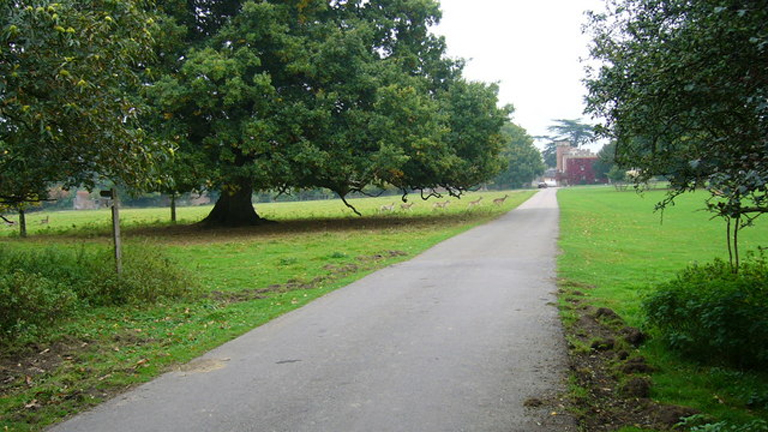
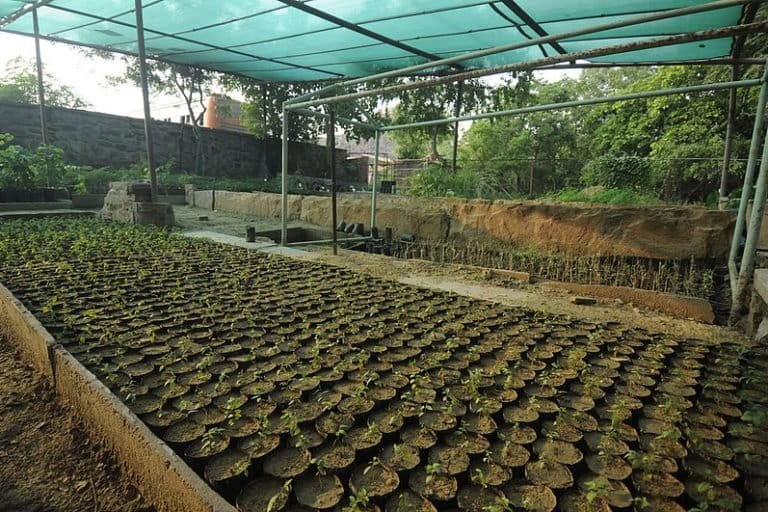
 It is an
It is an 





